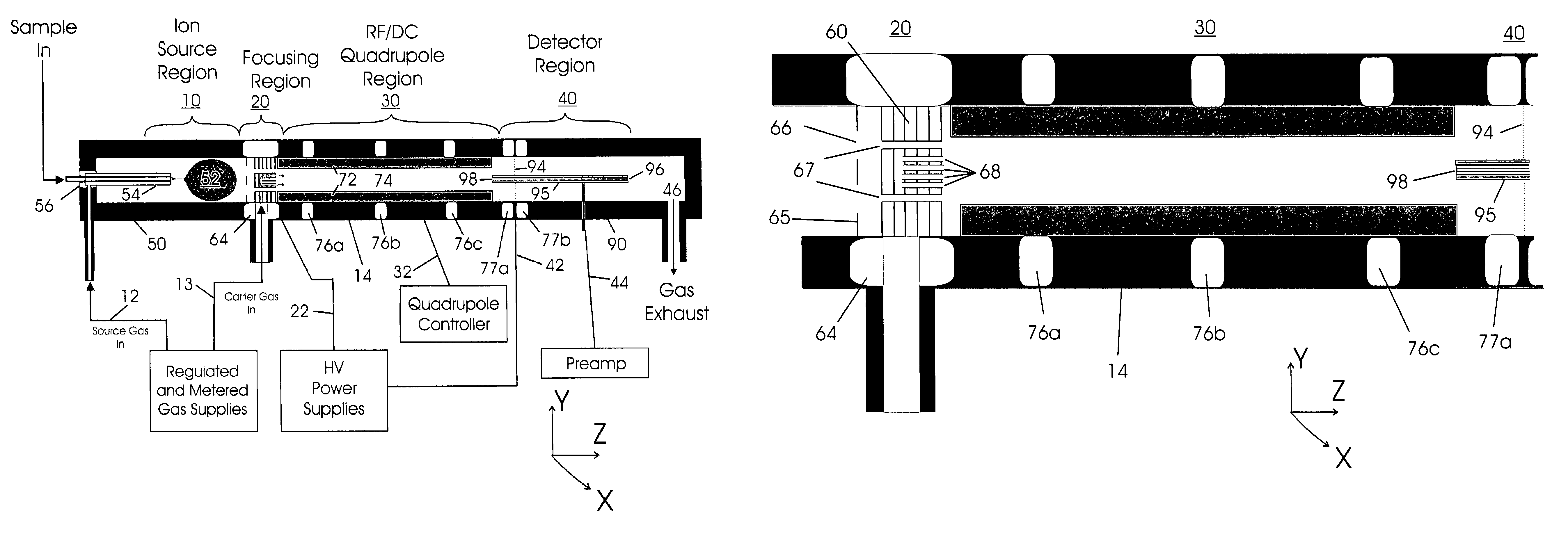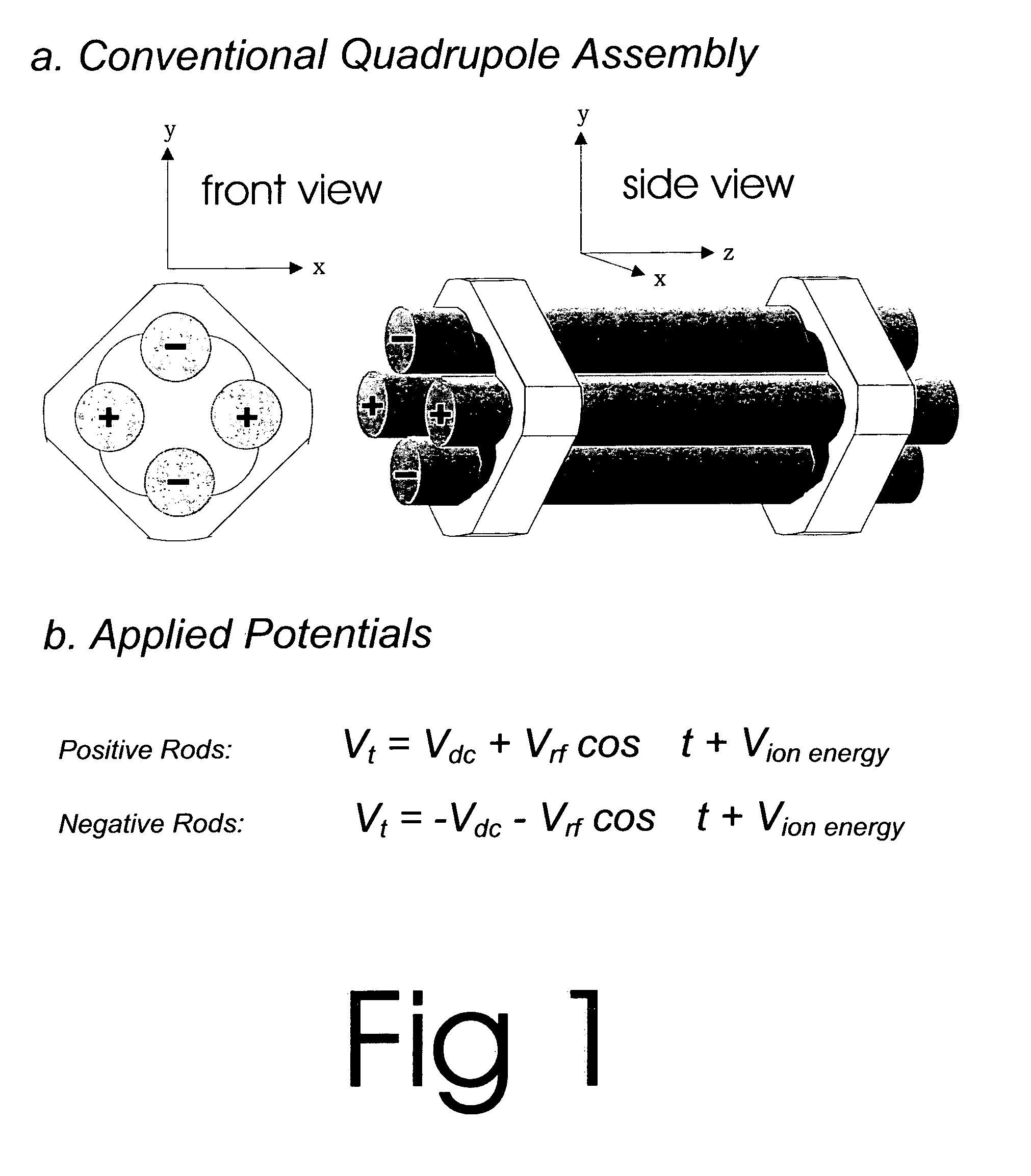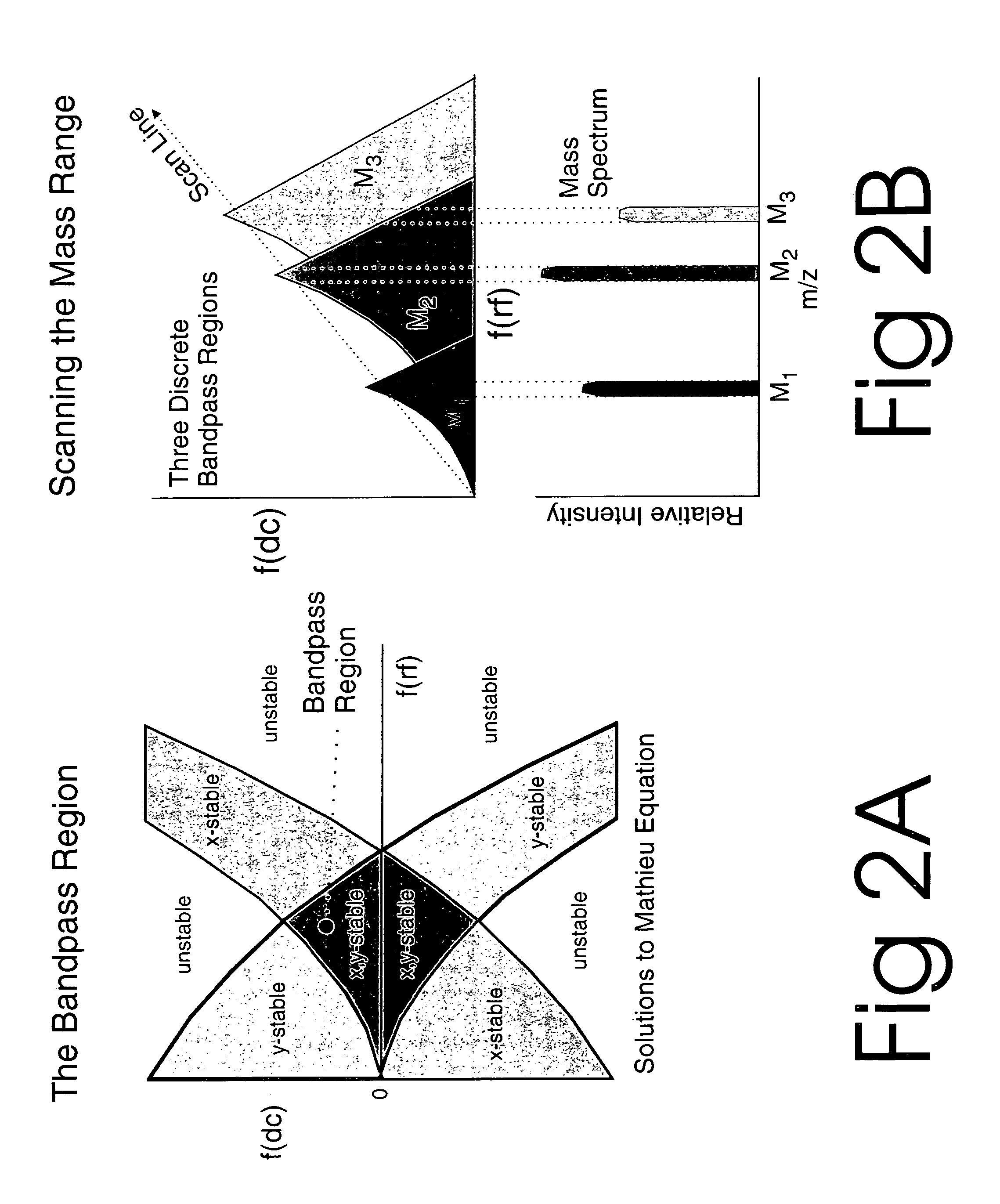Atmosperic pressure quadrupole analyzer
a quadrupole analyzer and atmospheric pressure technology, applied in the direction of instruments, particle separator tube details, separation processes, etc., can solve the problems of affecting deleteriously the motion of ions, limiting the operating pressure, and transferring small amounts of translational energy between, so as to achieve precise band-pass capability
- Summary
- Abstract
- Description
- Claims
- Application Information
AI Technical Summary
Benefits of technology
Problems solved by technology
Method used
Image
Examples
Embodiment Construction
Preferred Embodiment—FIGS. 6A, 6B, 7, 8, 9A, and 9B (Basic Focusing Device, On-Axis Detection)
[0109]A preferred embodiment of the atmospheric RF / DC device of the present invention is illustrated in FIGS. 6A and 6B. Basic parts include an Ion Source Region 10, Focusing Region 20, RF / DC Quadrupole Region 30, and Detector Region 40. The Ion Source Region 10 is mounted at one end of the cylindrical electrically conductive analyzer housing 14 and is symmetrically disposed about the central axis Z. The ion source may comprise, for example, a conductive electrospray ionization chamber 50 comprised of an ionization region 52, an electrospray needle 54, an insulator 56, and a gas inlet 12. A carrier gas is supplied upstream of the Ion Source Region 10 through the gas inlet 12 from the regulated and metered gas supply source. The gas is generally composed of, but not limited to nitrogen.
[0110]This device is intended for use in collection and focusing of ions from a wide variety of ion sources...
PUM
 Login to View More
Login to View More Abstract
Description
Claims
Application Information
 Login to View More
Login to View More - R&D
- Intellectual Property
- Life Sciences
- Materials
- Tech Scout
- Unparalleled Data Quality
- Higher Quality Content
- 60% Fewer Hallucinations
Browse by: Latest US Patents, China's latest patents, Technical Efficacy Thesaurus, Application Domain, Technology Topic, Popular Technical Reports.
© 2025 PatSnap. All rights reserved.Legal|Privacy policy|Modern Slavery Act Transparency Statement|Sitemap|About US| Contact US: help@patsnap.com



